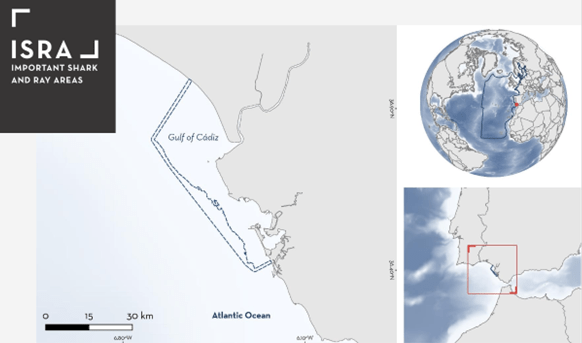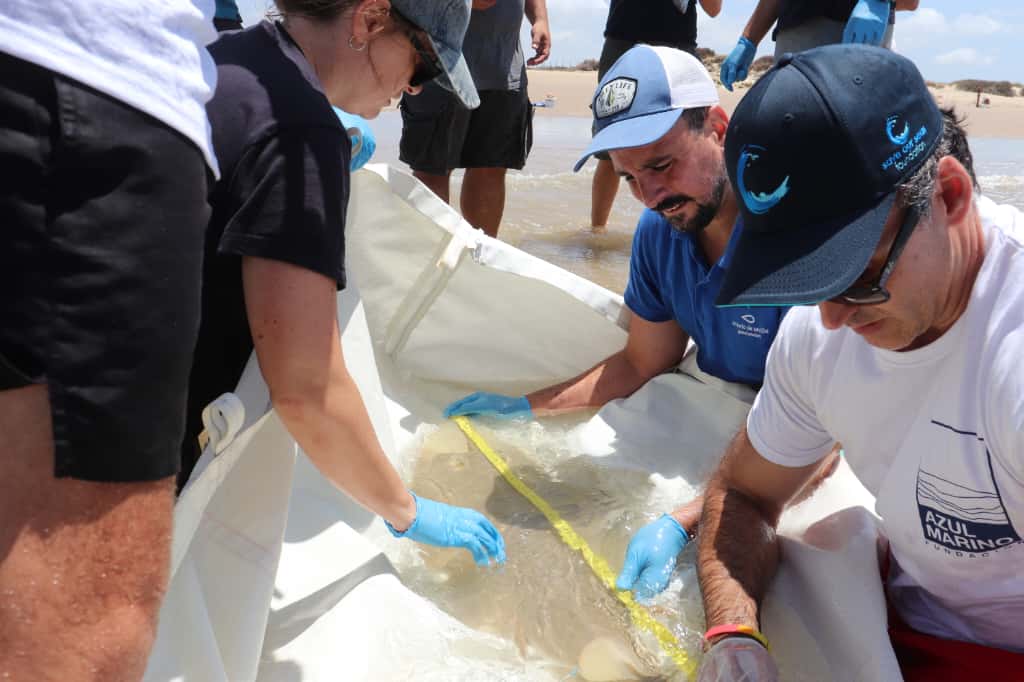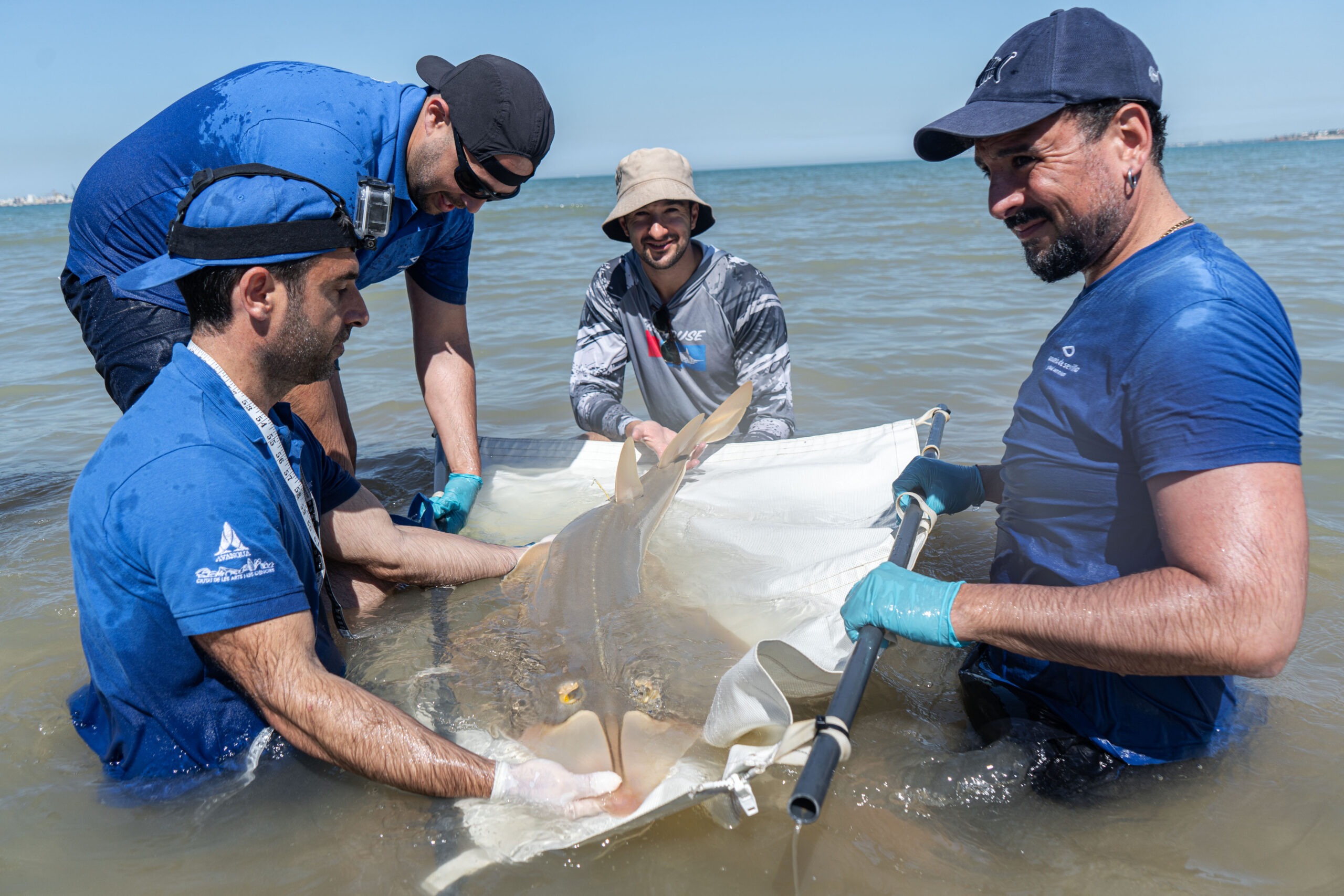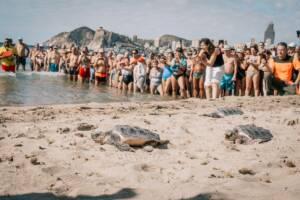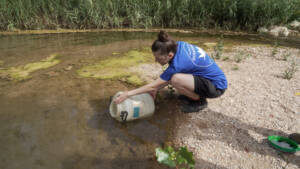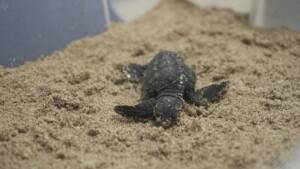Gulf of Cádiz Declared an International Refuge for the Giant Guitarfish
1 de October de 2025
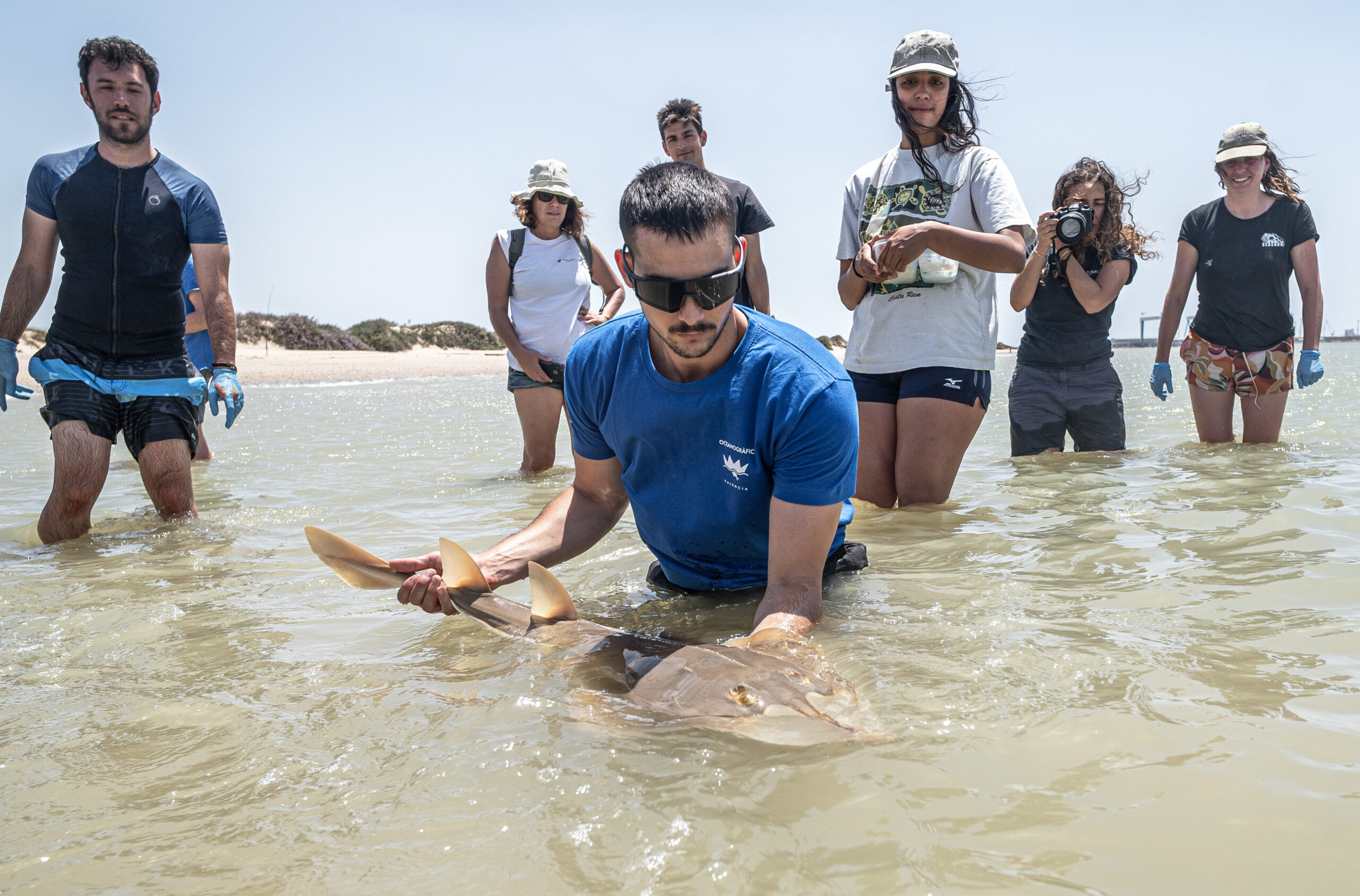
The International Union for Conservation of Nature declares the Gulf of Cádiz an Area of Importance for Sharks and Rays (ISRA), driven by data from the Glaucostegus Project on the giant guitarfish
Fundación Oceanogràfic, Fundación Azul Marino, Acuario de Sevilla, and Associació LAMNA, along with other entities, are coordinating an initiative to save the last European population of a species listed as Critically Endangered
The International Union for Conservation of Nature (IUCN) recognizes the coasts of Cádiz and Huelva as the last enclaves in Europe with a stable population of giant guitarfish (Glaucostegus cemiculus). This species, belonging to the ray group—cartilaginous fish related to sharks—is listed as Critically Endangered and included in the Spanish List of Wild Species under Special Protection.
The declaration of the Gulf of Cádiz as an Area of Importance for Sharks and Rays (ISRA) is part of the IUCN’s efforts to identify areas of interest for the protection of these threatened species on a global scale. Chondrichthyans (sharks, rays, and chimeras) face a global extinction crisis, with an estimated more than a third of species at risk of disappearing.
Fishing, especially in the last century, along with habitat loss and climate change, has aggravated the situation. Coastal habitats concentrate 75% of the threatened species, making sharks and rays one of the most vulnerable marine groups on the planet.
This is the case of the giant guitarfish, which in recent years has disappeared from much of the European coast due to threats such as incidental fishing, habitat loss, and human pressure. To reverse this situation, the Glaucostegus Project was born, the first initiative to study these animals in their natural environment in Europe, led by Dr. Jaime Penadés.
“With the declaration of this ISRA, the IUCN values the efforts we have made in the last six years to improve knowledge about the biology, ecology, and threats to the guitarfish within Spanish waters. And it clearly marks a roadmap to improve its protection at the national and global level,” explains Penadés.
The value of citizen science
The participation of recreational fishermen is a fundamental part of the project. Since 2018, Ángel Benítez, a recreational fisherman and founder of the Glaucostegus Project, has been coordinating the collection of data on accidental catches and sightings thanks to his collaborations. Today, these data exceed 80 confirmed observations of a species for which there were hardly any recent records since 2008, when—after its protection—the professional fleet stopped recording its catches.
Anyone can collaborate by sending photographs or videos of the specimen, including data such as date, time, place of encounter or capture, and any comments about the animal’s behavior. Thanks to these contributions, the presence of newborns in Cádiz and Huelva has been confirmed, an indication of possible reproduction of the species in our waters.
“We can all collaborate with the science and conservation of our species by doing citizen science. The different administrations and institutions should take into account both the initiatives of citizen collaboration and the recommendations and measures necessary for the conservation of our natural heritage, such as those of the IUCN in this case,” comments Ángel Benítez.
Threats to the species: poaching and post-capture stress
The Glaucostegus Project has also recorded cases of poaching, one of the latent threats to the species. The findings are mainly of severed heads on the beaches, abandoned to camouflage the capture of a protected species, keeping only the meat to make its identification difficult in the event of possible inspections. Greater vigilance and inspection are required to reduce its mortality.
Likewise, the project promotes rapid release protocols in case of accidental capture, with simple guidelines to minimize stress and shorten handling time.
The Glaucostegus Project is coordinated by the Fundación Oceanogràfic, the Fundación Azul Marino, the Acuario de Sevilla, and the Associació LAMNA, which have the permits and support of the MITECO, the Junta de Andalucía, and the Estación Biológica de Doñana. The IFAPA, the University of Cádiz, the Oceanário de Lisboa, Zoomarine Algarve, Seashore Environment & Fauna, as well as the Asociación Los Corrales de Rota and numerous recreational fishermen in the area also collaborate.

